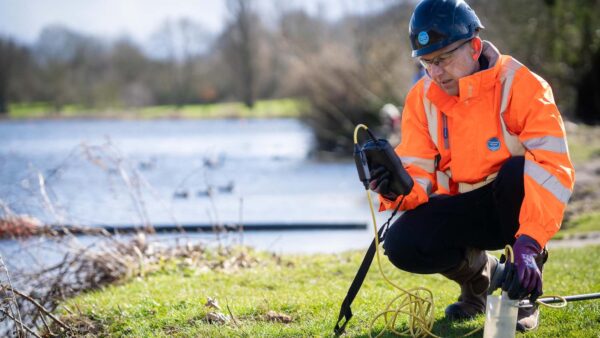
How do you change a construction company’s culture? Drawing on his experience with Birse, Wates and Costain, Dave Stitt argues that top-down directives rarely work – instead the focus should be lower down an organisation.
“Culture eats strategy for breakfast,” said the legendary American management guru, Peter Drucker (1909-2005). This means that a blueprint for change drawn up in the boardroom won’t last five minutes if the company’s culture rejects it.
I know a bit about this, having gone through three big culture-change programmes. These were at Birse, Wates and Costain, the latter two with me leading the charge. They taught me how huge an issue culture is in construction and how much it saddles organisations with inertia.
Back then, it wasn’t natural to talk about culture, partly because we didn’t think there was a culture – it was the way construction was. Asking me in 1980 to comment on the culture of my employer, Taylor Woodrow, would have been like asking a fish to outline its thoughts on water.
Partly, too, our culture blindness came from the fact that the contracting leadership class tends to be engineers and site managers. Their professional comfort zones are the predictable behaviour of concrete, steel and energy, not of messy, unpredictable humans. Culture, meanwhile, is all about humans, and I say that as a chartered civil engineer.
This is changing now as the industry comes under pressure to make space for people who are not white males, a complex and necessary challenge. But what do we do with this new awareness of culture? Drucker’s remark suggests that culture needs to improve somehow before a strategy shift, and this is where I hit pause.
“Top-down culture change involves broadcasting the board’s desires through roadshows, speeches, poster campaigns and trying to change attitudes among descending levels of management in the hope that it forces change all the way down to platoon level. It rarely works.”
Defining what culture is
What is the culture of an organisation? On the face of it, it’s simple: it’s how we are with each other, what we say and do, and how we make each other feel. But it goes deeper. Culture includes implicit (unspoken) codes of behaviour and shared assumptions about what’s normal, funny, and fun, who is esteemed and why, conceptions of right and wrong, how conflict is handled, and more.
Left to their own devices, cultures tend to become exclusionary, rewarding those who ‘get’ the implicit codes. Cultures reject those who don’t by outright hostility or, equally effective, by subtly depriving them of warmth and a sense of belonging. It’s just human nature; we’re tribal. We seek out people who are like us and avoid those who are not.
And what is the unit of culture? It gets tricky here. A country, a geographic region, or a national corporation can have an observable culture – Birse certainly did – although its markers tend to be general.
Within those big units, culture breeds just as virulently in the next level down. These are company divisions, corporate functions, or regional offices. In construction, culture breeds also in smaller groupings I’ll call ‘platoons’. Platoons are tactical units pulled together to carry out specific things, like a project or an aspect of a project. In construction, platoons with responsibility for critical outcomes tend to include people from different companies and disciplines. These could be the client, contractor, designers, specialist subcontractors, and more.
Focus on culture at ‘platoon’ level
What unit of culture should a construction business leader focus on to improve company performance? Is it the company, its main subdivisions, or down at platoon-level? My instinct says the platoon level because it’s the culture of platoons that determines the success or failure of a project, and the success of a contracting business boils down to maintaining a good surplus of successfully completed projects.
Chief executives won’t like this because they’re at the top and so tend to favour top-down initiatives because that’s what they can do. Top-down culture change involves broadcasting the board’s desires through roadshows, speeches, poster campaigns and trying to change attitudes among descending levels of management in the hope that it forces change all the way down to platoon level. It rarely works.
“In culture terms, professionalism is a beneficial bacteria, counteracting harmful bacteria that naturally fester in any culture.”
So, we have this situation where the culture of the organisational unit most critical to the success of a contracting business is also the hardest to control from the top. What to do?
First, we need to be clear about the culture we want. ‘Professional’ works for me. It means competence equal to the task. It means conscientiousness: the determination to do the right thing. It means commitment to the common goal over and above one’s own short-term commercial advantage. It means honesty, making sure information gets to where it’s needed as soon as it is available.
It also means inclusion: everyone in the platoon freely contributing their talent, intelligence and will to get the job done.
Platoons galvanised by a professional ethos are happy, and they succeed; platoons poisoned by clique-ishness, arse-covering, manoeuvring and deception breed conflict and incompetence, and they fail.
Top-down change often fails
Brute-force, top-down attempts to change attitudes are so often unsuccessful because attitudes are bound up with a person’s sense of self, which people consider off-limits. But if you give people simple techniques to help them do their jobs better, they’ll snap them up.
The technique I have in mind is a coaching approach to management, versus our default command-and-control approach. Coaching, something our young management recruits like and can pick up easily, engenders true professionalism. In culture terms, professionalism is a beneficial bacteria, counteracting harmful bacteria that naturally fester in any culture.
If we give our new, young managers simple techniques to be professional and to encourage professionalism in their platoons, we can change company culture from a new direction, the ground up, with immediate bottom-line effects.
Dave Stitt is a professionally certified coach and works with leadership teams in construction. His book, Coach for Results: Empower your people to achieve the extraordinary, is available on Amazon, and his course on the topic is available at the CIOB Academy.











